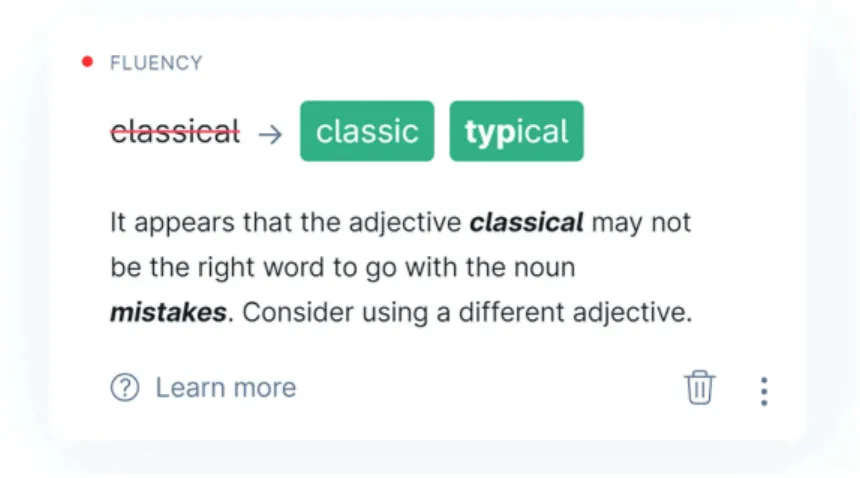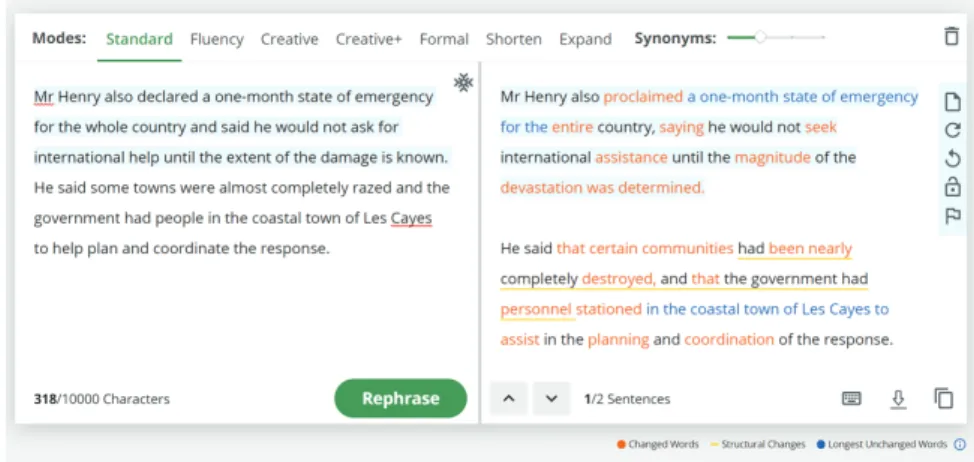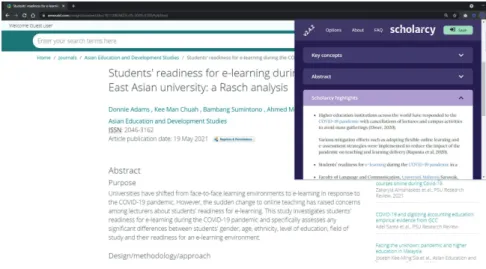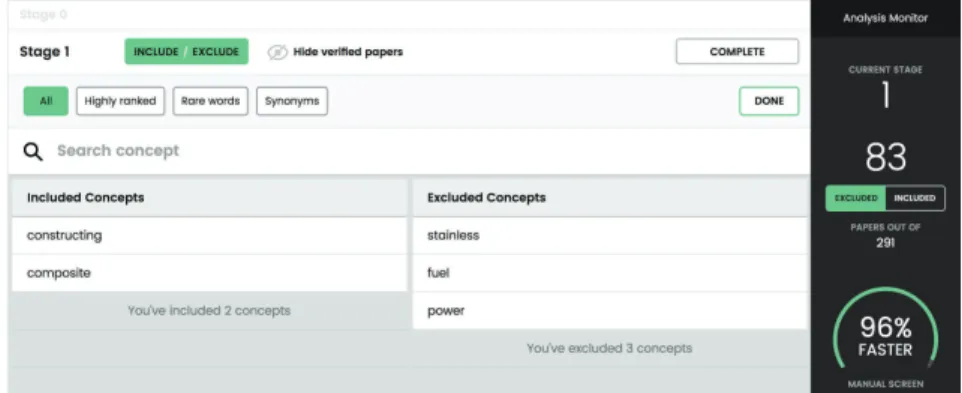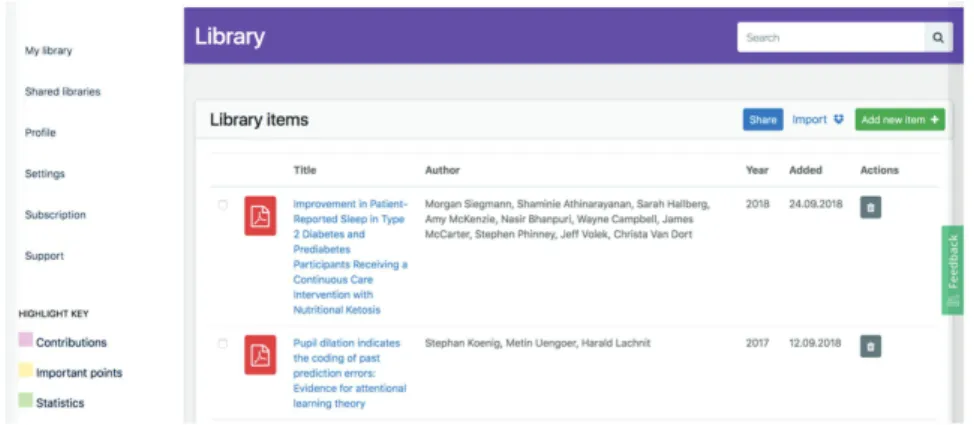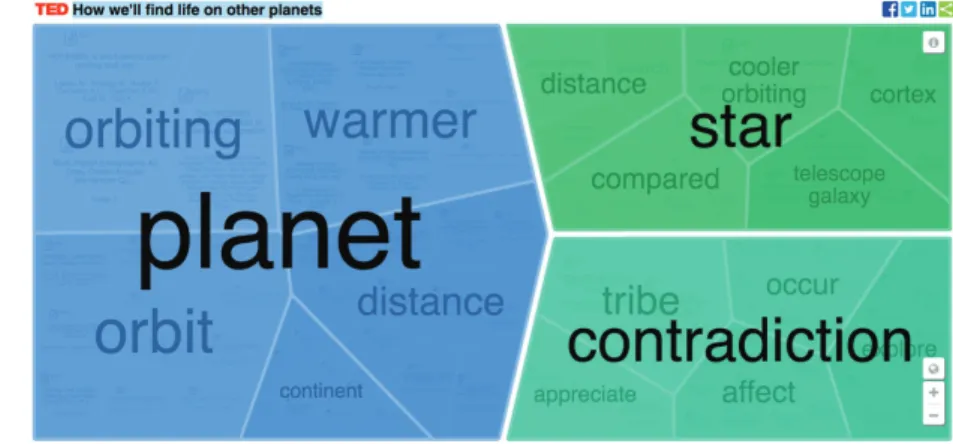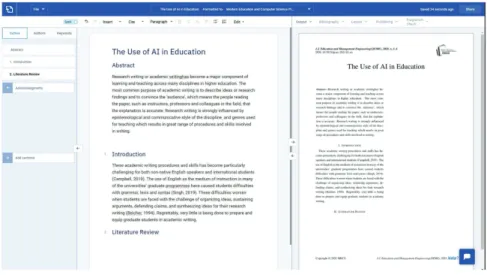AI in Education: A Few Decades from Now
Introduction
Current Trends of AI Components in Research Writing
This section looks at trends in AI components by outlining their effect on research writing. The term “tool” in this chapter refers to writing technologies ranging from programs, applications, and platforms (Cotos, 2015). As monitoring students' writing and providing timely, valuable and productive feedback becomes too time-consuming and labor intensive, writing technologies are being developed to facilitate these needs (Lim & Phua, 2019).
These AI-powered writing tools can help students learn and develop their research writing skills. AWE is able to provide both formative and summative feedback to students (Foltz et al., 2013). AI-powered writing tools are therefore now playing an increasingly valuable role in research writing (Zhang, 2020).
In addition to providing information about learning, AI applications can provide solid instructional practice and help students write their research (Zawacki-Richter et al., 2019). Perhaps the most notable contribution of AI-powered writing tools can be seen in the assessment, feedback, guidance, and content generation for teachers and students (Nazari et al., 2021). The literature shows that the AI-powered writing tools that have been used to automatically analyze research writing can largely be classified into four components, namely rule-based, corpus-based sensing, natural language processing (NLP), and deep learning, or neural network.
The rule-based tool is a grammar checking system often used to suggest and check common sentence structures and academic words in research articles. Corpus-based tools use text summarization to identify key sentences from a significant amount of information and produce a concise and fluid summary while preserving key information and overall meaning (Extance, 2018). Deep learning or neural network programs are capable of reading scientific papers and presenting a summary in one or two sentences.
It is useful in helping writers gain a prior sense of what these scientific articles are about and enables better decision-making when writing research (Dangovski et al., 2019). The remaining sections of this chapter will present a comprehensive overview of artificial intelligence in research writing, as well as its characteristics, possibilities, and limitations.
Review of Studies on AI in Research Writing
Basically, AI-based tools are inspired by the idea of improving the learning of good writing through different affordances included in each tool, without replacing the role of the writer in the process (Crompton &. Song, 2021; Khan et al. , 2020; Lu, 2019). In recent years, AI-based tools for research writing are geared to ease the process of performing common research tasks (such as literature review and data visualization) as well as providing continuous feedback to authors to improve their writing and proofreading (such as similarity index and spell check). In a randomized controlled trial of 120 postgraduate students, Nazari et al. 2021) found that AI-based writing tools were able to improve students' learning behavior and attitudinal technology acceptance.
While the tools may sometimes provide imprecise suggestions, they were mostly helpful in motivating students to be more confident in their research writing. 2020) focused on a similar area by developing the Research Writing Tool (RWT) that is capable of examining research writing through various forms of automated feedback. The suggestions provided by RWT are of great help to beginning writers who may not be aware of a specific style of research writing within a discipline.
Additionally, the use of AI in research writing tools helps address some of the humanistic factors in writing, such as motivation and anxiety. It is common knowledge that most students or novice researchers lack motivation for scientific writing due to the prevailing perception of difficulties in producing research writing (Tansomboon et al., 2017). The development of artificial intelligence in research writing is not limited to end-user tools.
One example is the work of Sirbu et al. 2018), who specifically used the ReaderBench framework to evaluate over 15,000 essays to generate 1,200 indices of text complexity. 174 Artificial Intelligence in Higher Education However, it should be noted that studies on adaptive systems for teaching and learning in higher education do not yet seem to focus on research writing. Adaptive system use is still associated with providing academic advising to students (Alfarsi et al., 2017), supporting university career services (Nguyen et al., 2018), and enhancing learning management systems with features that can recommend customized content. students (Kose & Arslan, 2016).
Adaptive systems for research writing can be said to be still in their infancy, but with great potential as they allow students to obtain intelligent feedback rather than rule-based output. This review of the studies related to the use of artificial intelligence in research writing has not only demonstrated its wide-ranging application, but also its importance in guiding students and novices. Most of the tools reviewed were not commercially released, but have provided valuable input into various applications of AI approaches to guide research writing.
Features and Affordances of AI-Based Tools in Research Writing
- Language and Mechanics
- Text Summarizer and Synthesizer
- Typesetting
From students' initial drafts to final drafts, the system is able to provide feedback and guidance that adapts to students' cognitive needs. The following section will introduce some popular AI-based tools based on their features and capabilities. The free version has a limit on the number of words that can be entered.
In a study by Inayah and Sulistyaningrum (2021), they found QuillBot to be useful in helping students overcome paraphrasing difficulties, as this is often seen as a challenging task in research writing. These tools could help them work more efficiently, although they should be vigilant in checking the accuracy of the tools. Although this tool does not automatically write the review for the users, this tool is widely used to filter articles and help researchers efficiently choose the most relevant articles for their research writing.
Offered in free and premium packages, Iris.ai is still fairly new to the market, but has built its reputation on its corpus-based NLP engine and intuitive visualizations, as shown in Figure 9.6 and Figure 9.7. The primary capability of Iris.ai is in its ability to transform what is found in research papers into neatly presented categorization and mapping (Extance,. All the filtered research papers are then compiled within Iris.ai for deeper checking, especially in terms of the parameters set by the users.
Due to its pricing, Iris.ai seems to be more accessible to researchers than students. Another major difficulty in research writing is in terms of fulfilling the different formats and types that are predetermined by different publishers. While LaTeX is widely used in academia for typesetting (Baramidze, 2013), its commands and programming-like interface tend to be confusing for beginners.
This web-based tool allows users to select a format of their choice (for example, paper format for a specific journal in large databases such as IEEE or Springer) and upload their content to be instantly converted to the required format. As shown in Figure 9.8, once the user selects a paper format for a journal, they can immediately upload their content into Microsoft Word to be converted into the correct format. 180 Artificial Intelligence in Higher Education Typeset.io is by far the most convenient tool for typesetting, and while it doesn't use high-end Artificial Intelligence, its ability to detect key sections and learn to match them within the uploaded content can still considered useful in research writing.
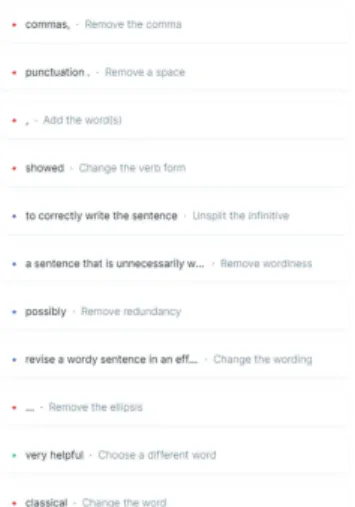
Future Potentials
The large selection of format requirements of different journals is really another option that can benefit researchers and students. This shortcoming highlights the need for more in-depth research using more robust algorithms in dealing with the complexity of natural language usage. Deep learning beyond Bayesian methods such as deep belief network (Huang et al., 2019) is showing great promise in understanding language use from large corpora.
Second, AI-based research writing tools must meet requirements of different fields, as each field may have a set of expectations that need to be addressed. For example, research writing in the medical field is quite different from that in the humanities. Third, it is crucial for developers of AI-based research writing tools to provide formative feedback, which is meaningful, rather than repetitive pre-determined feedback.
Despite the limitations, it would be interesting to see how AI continues to evolve and play its role in research writing in the future.
Conclusion
The prevalence of study-related stress in international students in the initial phase of the international stay. Use of artificial intelligence powered digital writing assistant in higher education: Randomized controlled trial. Adaptive interface that provides modeling, coaching, and fading to improve revision skills in academic writing.
Writing task complexity, students' motivational beliefs, anxiety, and their written production in English as a second language. Computer-assisted EFL writing and AI-based assessment: An example from a university reading and writing course. A systematic review of research on artificial intelligence applications in higher education - where are the teachers?
